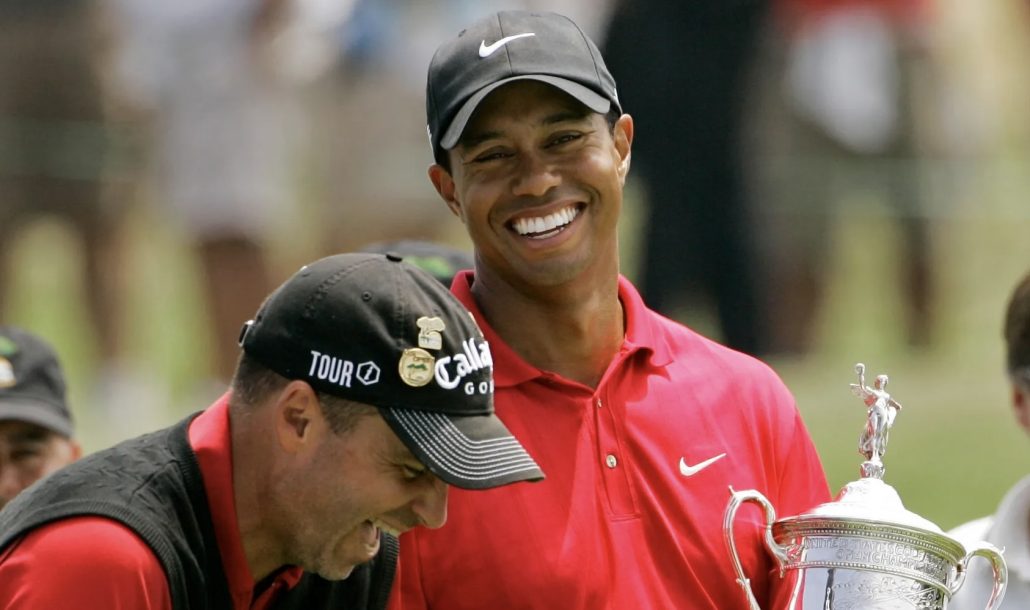In golf, the sudden-death playoff makes for exhilarating viewing, writes BRENDAN BARRATT. Like football’s penalty shootouts, it creates one of the most dramatic endings in modern sport.
To the victor, the spoils that come with a tournament win: money, prestige, respect and playing rights for the next few seasons. To the loser: a mere footnote in the annals of golfing history.
Yet playoffs were not always so. In fact, the concept of sudden death is relatively new, likely introduced to satisfy television producers and audiences who would prefer a swift and exciting end than watching two or more golfers slog it out over another 18 holes or more.
Although commonplace in regular tournaments, The Masters, the Chevron Championship and the Evian Championship are the only Majors across men’s and women’s golf to make use of a sudden-death playoff. The others use variations of aggregate-hole playoffs, meaning that the player with the best score over two, three or four holes will be crowned champion.
As recently as 2017, the US Open had an 18-hole playoff, meaning that the players, officials and television crews had to come back the following day to determine the champion. Occasionally even the extra 18 holes would not be enough to separate two players, as happened when Tiger Woods needed a 19th extra hole to defeat Rocco Mediate at the 2008 US Open.
Now, thankfully, the US Open has adopted a two-hole aggregate playoff, which is far less tedious without compromising on fairness.
The Open Championship was the first Major to change to an aggregate-hole playoff, in 1985. The system was not needed until 1989, however, when Mark Calcavecchia beat Greg Norman and Wayne Grady at Royal Troon. There has been no need for a playoff at The Open since 2015, when Zach Johnson dashed the hopes of Louis Oosthuizen and Marc Leishman over the 1st, 2nd, 17th and 18th holes at the Old Course at St Andrews.
The PGA Championship, which started as a matchplay tournament but changed to strokeplay in 1958, first used an 18-hole playoff to decide the winner but switched to sudden death in 1977 and finally settled on a three-hole aggregate playoff in 2000. Justin Thomas, in 2022, was the last player to prevail in a playoff for the Wanamaker Trophy, defeating Will Zalatoris.
The Masters introduced sudden-death playoffs in 1976, which is the same year that rookie Fuzzy Zoeller won the title, by edging Ed Sneed and Tom Watson with a birdie on the second extra hole. Since then, the sudden-death playoff has been required a further 10 times, the last time in 2017, when Sergio Garcia needed one extra hole to defeat Justin Rose.
Interestingly, the Women’s British Open, which has been around since 1976, has only ever needed three playoffs to determine its champion. The last of these was, of course, two years ago, when South Africa’s Ashleigh Buhai narrowly defeated Korea’s Chun In-gee in a four-hole aggregate playoff.
Some playoffs just keep on going, despite being sudden death. In 1976, it took Aussie Peter Thomson a record 14 holes to defeat Graham Marsh, Brian Jones and Shozo Miyamoto and claim the Pepsi-Wilson Tournament on the Japan Golf Tour.
At the 2003 Presidents Cup, after the International and American teams had finished regulation level on points, stalwarts Ernie Els and Tiger Woods embarked upon a playoff to determine which team would take home the cup. After three mesmerising holes, darkness set in and the team captains agreed to share the Cup.
This pales in comparison to the lengthy sudden-death playoff between Americans Lloyd Mangrum and Cary Middlecoff for the 1949 Motor City Open. After the pair could not be separated for 11 extra holes, and with the course now in darkness, they were declared co-champions.
While some players thrive under the pressure of playoffs, others seem to buckle. Tiger Woods, unsurprisingly, was a master of the playoff and his record of 11 wins and just four losses highlights his ability to perform under duress.
Similarly, Annika Sorenstam had a remarkable record in playoffs, with the Swede converting 16 out of 22 into victories.
Other players were not so fortunate. Mark Calcavecchia had a playoff record of one win and five losses over his illustrious career. Fortunately for the American, the one playoff win was for a Major: The Open Championship in 1989.
Greg Norman, perhaps unsurprisingly, had a rather poor playoff record, winning just five of the 15 across the PGA and DP World Tours. Unfortunately for Norman, four of these playoff losses were for Major championships.
Fellow American Jonathan Byrd produced arguably the most dramatic shot in playoff history when he won the 2010 Justin Timberlake Shriners Hospitals for Children Open. Byrd scored a hole-in-one of the fourth extra hole to defeat Martin Laird and Cameron Percy and claim his fourth PGA Tour title.
– This article first appeared in the March 2024 issue of Compleat Golfer magazine.









